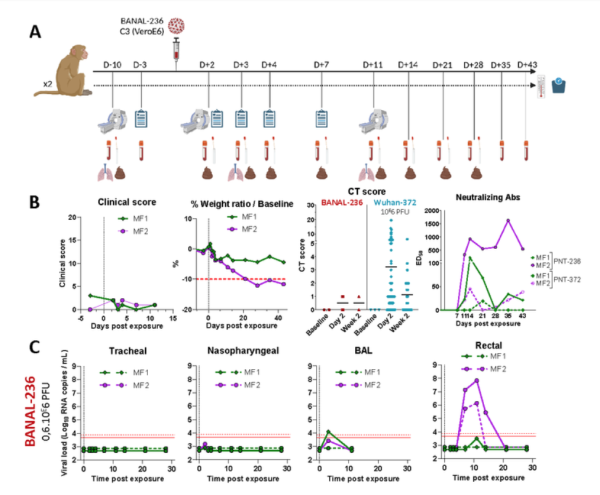The SARS-CoV-2 Furin Cleavage Site
Research
- MSH3 Homology and Potential Recombination Link to SARS-CoV-2 Furin Cleavage Site1)
Scientists struggles to recreate the SARS-CoV-2 furin cleavage site through infection
The origin of the furin cleavage site (FCS) in the SARS-CoV-2 S protein have long been a mystery. Now it seems to have became even more mysterious.
Recently, a group of french Scientists attempted to passage one of the closest relatives of SARS-CoV-2 that can be cultured, BANAL-236, in models that are relative to human transmission and respiratory infection, what that was thought to be enabled by the furin cleavage site in the SARS-CoV-2 S protein, in the hope of trying to recreate the original emergence of the SARS-CoV-2 furin cleavage site that was thought to have triggered the current pandemic.
During preliminary inoculation of cynomolgus macaques with BANAL-236, it was found that, unlike SARS-CoV-2, BANAL-236 infects primarily the intestines, and that shedding through the respiratory pathway was minimal, despite intranasal and intratraecheal inoculation being used in this inoculation test. It was therefore decided that a maximal of 6 serial passages in the CaCo-2 cell line and K18-hACE2 mice would be used to model the potential transmission route of BANAL-236 in humans, in order to simulate a worse-case scenario of human-to-human transmission through the intestinal and respiratory route, respectively.
Despite 6 serial passages in the lung tissue of K18-hACE2 mice or in the human intestinal cell line CaCo-2, no evidence of either a furin cleavage site or insertions were found to emerge at the S1-S2 border, and no variations at all around the S1-S2 border were found despite very high sequencing depth being used. Characterization of the length of the S1-S2 sequence of the passaged BANAL-236 virus using RT-PCR and Agarose gel electrophoresis of the amplification product failed to detect any evidence of insertions.
Neither were the virulence of BANAL-236 increased during serial passage in the K18-hACE2 mouse model, nor were the tropism of the virus show any change compared to the original. Mutations in other parts of the genome was discovered during sequencing of the passaged virus, but they happened on sites that were identical between BANAL-236 and SARS-CoV-2, and does not resemble any of the significant variants of SARS-CoV-2 found within GISAID data.2)

